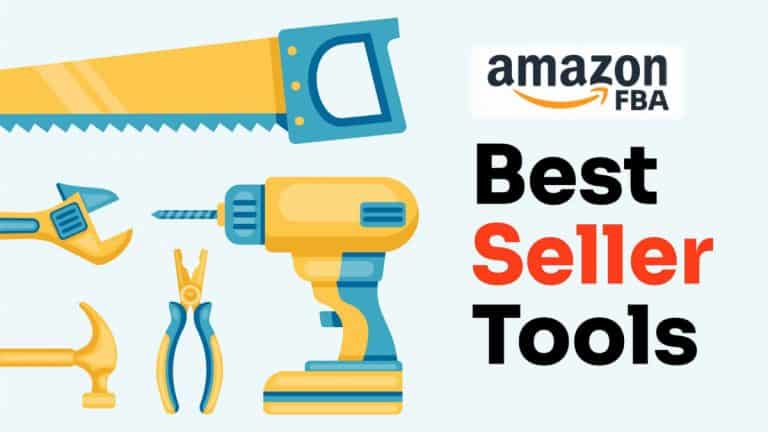Navigating Amazon’s Algorithm Changes: SEO Strategies for Private Label Sellers

Navigating Amazon’s Algorithm Changes: SEO Strategies for Private Label Sellers
Amazon's A9 and A10 algorithms are constantly evolving, making it crucial for private label sellers to stay updated on the latest SEO strategies. With new updates affecting search rankings, visibility, and conversions, adapting to these changes is key to maintaining a competitive edge. In this guide, we’ll explore the most effective Amazon SEO strategies to help private label sellers optimize their listings and increase sales.
Understanding Amazon’s Algorithm Updates
Amazon's search algorithm prioritizes customer satisfaction and relevance. While the A9 algorithm focused heavily on sales velocity and keyword optimization, the A10 algorithm introduced stronger relevance factors, placing greater emphasis on organic engagement, external traffic, and customer experience. To stay ahead, sellers must adjust their SEO tactics accordingly.
SEO Strategies to Improve Amazon Private Label Rankings
1. Keyword Research & Optimization
Keyword optimization remains the foundation of Amazon SEO. To rank higher in search results, sellers must identify high-performing keywords that match customer search intent. Here’s how:
Use Amazon Auto-Suggest, Helium 10, and Jungle Scout for keyword discovery.
Target a mix of short-tail and long-tail keywords to capture both high and low competition searches.
Optimize your title, bullet points, and description with primary and secondary keywords naturally.
Leverage backend search terms to include relevant keywords without keyword stuffing.
2. High-Quality Product Listings
Amazon rewards listings that offer clear, compelling, and conversion-friendly content. Ensure your private label product pages are optimized with:
Keyword-rich and engaging product titles (use power words like “premium,” “best-selling,” and “exclusive”).
Bullet points that highlight key features and benefits in a scannable format.
A detailed product description with persuasive storytelling and keyword integration.
A+ Content (EBC) and Brand Registry benefits to enhance customer trust and engagement.
3. Optimize Product Images & Videos
Since Amazon is a visual marketplace, high-quality images can significantly improve conversion rates. Follow these image optimization tips:
Use high-resolution images (at least 1000x1000 pixels) to enable zoom functionality.
Show the product from multiple angles and in real-life scenarios.
Include infographics that highlight unique selling points.
Upload product videos to showcase features and answer customer concerns visually.
4. Leverage External Traffic
The A10 algorithm values traffic from external sources, making off-Amazon marketing essential for boosting rankings. Effective external traffic strategies include:
Running Google Ads, Facebook Ads, and Instagram Ads to drive targeted traffic.
Using influencer marketing to generate brand awareness and credibility.
Building an email list for retargeting and launching new products.
Creating a Shopify website or blog to funnel organic traffic to Amazon.
5. Encourage Customer Engagement & Reviews
Positive reviews and engagement are crucial for ranking and conversions. To improve customer interaction:
Use Amazon Vine and Early Reviewer Program to gather authentic early reviews.
Send automated follow-up emails to request feedback (complying with Amazon’s policies).
Deliver outstanding customer service to reduce negative reviews and increase positive ratings.
Engage in social media discussions to create a loyal brand community.
6. Optimize for Voice Search
With the rise of Alexa and voice-activated search, optimizing for voice queries can give sellers a competitive edge. Focus on:
Using conversational keywords and natural language in listings.
Answering common customer questions in the product description and Q&A section.
Structuring listings for quick, informative answers that align with voice search patterns.
7. Monitor and Adapt to Algorithm Changes
Amazon's algorithm is always evolving, so staying updated is crucial. Regularly monitor your SEO performance using:
Amazon Seller Central Reports to analyze keyword rankings and conversions.
Third-party analytics tools like Helium 10, Jungle Scout, and AMZScout.
A/B testing different titles, bullet points, and descriptions to find the best-performing variations.
Keeping up with Amazon SEO trends via forums, webinars, and seller communities.
Final Thoughts
Amazon SEO is an ongoing process that requires regular updates and strategic adjustments. By focusing on keyword optimization, high-quality content, external traffic, and customer engagement, private label sellers can effectively navigate Amazon’s algorithm changes and boost their product rankings. Stay informed, test new strategies, and always prioritize delivering a seamless shopping experience to succeed in the ever-evolving Amazon marketplace.





